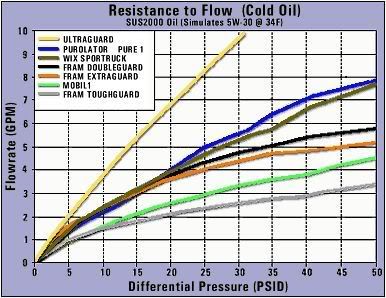So I had some discussions with Purolator engineering, and asked them if they could share any flow performance data on their PureOne oil filters. Their response was basically that their data is "proprietary" and can't be shared - probably understandable. BUT, they wouldn't even share any basic info like "max flow capability" like WIX/NAPA shows (ie, 7-9 GPM max) to get an idea of how restrictive they might be. Or even say something like "The PureOne meets or exceeds SAE Test XYZ for flow."
Are they hiding something? Doesn't it make sense that if their PureOne filters flowed well that they would advertise that spec? They are so tight lipped it makes me wonder if PureOne is something I should use or not ... on the fence now about them. I might go with WIX now, as it sounds like they flow well, but they don't quite filter as well as the PureOne (95% vs 99.9% @ 20u). Purolator kindly shared the filtering performance spec, but nothing for the flow performance.
If there any independent flow data around that shows where the PureOne sits compared to the other filters on the market?
Are they hiding something? Doesn't it make sense that if their PureOne filters flowed well that they would advertise that spec? They are so tight lipped it makes me wonder if PureOne is something I should use or not ... on the fence now about them. I might go with WIX now, as it sounds like they flow well, but they don't quite filter as well as the PureOne (95% vs 99.9% @ 20u). Purolator kindly shared the filtering performance spec, but nothing for the flow performance.
If there any independent flow data around that shows where the PureOne sits compared to the other filters on the market?
Last edited:





